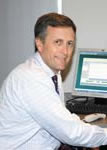Central Auckland, East Auckland, North Auckland, South Auckland, West Auckland > Private Hospitals & Specialists >
SRG Radiology
Private Service, Radiology
Today
Ascot Office Park, 93-95 Ascot Avenue, Greenlane, Auckland
8:00 AM to 5:00 PM.
Cavendish Clinic, 175 Cavendish Drive, Manukau, Auckland
8:00 AM to 5:00 PM.
2 Te Napi Drive, Takanini
8:30 AM to 5:00 PM.
Description
SRG Radiology is an IANZ accredited radiologist-run practice with an excellent team of radiologists, MRI technicians, radiographers, sonographer and reception staff available to cater for common and specialised radiology procedures.
We specialise in:
- Magnetic Resonance Imaging (3 Tesla MRI)
- CT Scanning
- Nuclear Medicine SPECT/CT Scanning
- X-ray
- Ultrasound
- Musculoskeletal Ultrasound including steroid/ autologous blood injections/ calcium aspiration
- Musculoskeletal Intervention, such as nerve root injections (cervical and lumbar), epidural and facet joint injections, joint injections/ aspirations, arthrography.
We have installed Philips MRI 3.0 Tesla scanners which produce high-quality images of unsurpassed resolution. The advantages of 3 Tesla MRI are particularly evident in the diagnosis of disorders of the spine, pelvis, vascular and musculoskeletal systems.
Radiological procedures are used for looking at the internal structures of the body, whether bone or soft tissue. Usually, these examinations are carried out to:
- diagnose disease states, such as cancer or heart disease
- show the extent of injury to body structures
- aid in interventional procedures to help with pain relief.
We work closely with Orthopaedic Surgeons and other Specialists to ensure high-quality imaging is performed, thus avoiding the need to repeat examinations.
- Medical Radiation Technologists (MRTs) or Radiographers perform your examinations and scans.
- Sonographers perform your ultrasound examinations.
- Radiologists are specialist doctors who read and understand your films. They interpret the results of the images and send reports to your doctor.
Consultants
-

Dr Lucinda Boyer
Diagnostic & Interventional Radiologist
-

Dr I-Ting Chan
Diagnostic & Interventional Radiologist
-

Dr Andrew Clarke
Diagnostic & Interventional Radiologist
-

Dr Richard Gee
Diagnostic & Interventional Radiologist
-

Dr Quentin Reeves
Diagnostic & Interventional Musculoskeletal / Nuclear Medicine Radiologist
-

Dr Francessa Wilson
Neuro/Paediatric Radiologist
-

Dr Adam Worthington
Diagnostic & Interventional Radiologist
Referral Expectations
Referrals are required for all radiology procedures, either from a General Practitioner or a Specialist.
You can call us on 0800 774 9729 to make an appointment, but we can take patients on a walk-in basis for X-ray. You may, however, have some special preparation for your scan or X-ray, so check with us or your doctor about this. For more information, visit our website.
We accept referral forms from all radiology providers.
Hours
Ascot Office Park, 93-95 Ascot Avenue, Greenlane, Auckland
8:00 AM to 5:00 PM.
| Mon – Fri | 8:00 AM – 5:00 PM |
|---|
Please note that X-Ray, US, Fluoro, Nuclear Medicine SPECT-CT are only available between 8.30am -5pm. MRIs are available for the full range of opening hours.
If you are having an MRI scan please go to Level 3.
For Ultrasound, X-ray, Fluoroscopy, CT and Nuclear Medicine/ SPECT-CT please go to Level 2.
Cavendish Clinic, 175 Cavendish Drive, Manukau, Auckland
8:00 AM to 5:00 PM.
| Mon – Fri | 8:00 AM – 5:00 PM |
|---|
Please note that X-Ray, Ultrasound, and CT are only available between 8.30am -5pm.
MRIs are available for the full range of open hours.
2 Te Napi Drive, Takanini
8:30 AM to 5:00 PM.
| Mon – Fri | 8:30 AM – 5:00 PM |
|---|
Please note: Xray ONLY is offered at this site
Procedures / Treatments
An MRI machine does not work like an X-ray or CT; it is used for exact images of internal organs and body structures. This method delivers clear images without the exposure of radiation. The procedure uses a combination of magnetic fields and radio waves which results in an image being made using the MRI’s computer. What to expect? You will have all metal objects removed from your body. You will lie down on a narrow padded moveable table that will be slid into the scanner, through a circular opening. You will feel nothing while the scan is in progress, but some people can feel slightly claustrophobic, or closed in, whilst inside the scanner. The scanner can make quite loud noises. You will be asked to remain still and hold your breath on command. There are staff present; they will not necessarily remain in the room, but will speak with you via an intercom system and will be viewing the procedure constantly through a windowed control room, from where they will run the scanner. Some procedures will require contrast medium. Contrast medium is a substance that makes the image of the MRI clearer. Contrast can be given by mouth, or by injection into the bloodstream. The scan time will vary depending on the type of examination required, but as a rule it will take around 30 minutes.
An MRI machine does not work like an X-ray or CT; it is used for exact images of internal organs and body structures. This method delivers clear images without the exposure of radiation. The procedure uses a combination of magnetic fields and radio waves which results in an image being made using the MRI’s computer. What to expect? You will have all metal objects removed from your body. You will lie down on a narrow padded moveable table that will be slid into the scanner, through a circular opening. You will feel nothing while the scan is in progress, but some people can feel slightly claustrophobic, or closed in, whilst inside the scanner. The scanner can make quite loud noises. You will be asked to remain still and hold your breath on command. There are staff present; they will not necessarily remain in the room, but will speak with you via an intercom system and will be viewing the procedure constantly through a windowed control room, from where they will run the scanner. Some procedures will require contrast medium. Contrast medium is a substance that makes the image of the MRI clearer. Contrast can be given by mouth, or by injection into the bloodstream. The scan time will vary depending on the type of examination required, but as a rule it will take around 30 minutes.
Service types: Magnetic resonance imaging (MRI).
An MRI machine does not work like an X-ray or CT; it is used for exact images of internal organs and body structures. This method delivers clear images without the exposure of radiation.
The procedure uses a combination of magnetic fields and radio waves which results in an image being made using the MRI’s computer.
What to expect?
You will have all metal objects removed from your body. You will lie down on a narrow padded moveable table that will be slid into the scanner, through a circular opening.
You will feel nothing while the scan is in progress, but some people can feel slightly claustrophobic, or closed in, whilst inside the scanner. The scanner can make quite loud noises. You will be asked to remain still and hold your breath on command. There are staff present; they will not necessarily remain in the room, but will speak with you via an intercom system and will be viewing the procedure constantly through a windowed control room, from where they will run the scanner.
Some procedures will require contrast medium. Contrast medium is a substance that makes the image of the MRI clearer. Contrast can be given by mouth, or by injection into the bloodstream. The scan time will vary depending on the type of examination required, but as a rule it will take around 30 minutes.
An X-ray is a high frequency, high energy wave form. It cannot be seen with the naked eye, but can be picked up on photographic film. Although you may think of an X-ray as a picture of bones, a trained observer can also see air spaces, like the lungs (which look black) and fluid (which looks white, but not as white as bones). What to expect? You will have all metal objects removed from your body. You will be asked to remain still in a specific position and hold your breath on command. There are staff present, but they will not necessarily remain in the room, but will speak with you via an intercom system and will be viewing the procedure constantly through a windowed control room. The examination time will vary depending on the type of procedure required, but as a rule it will take around 30 minutes.
An X-ray is a high frequency, high energy wave form. It cannot be seen with the naked eye, but can be picked up on photographic film. Although you may think of an X-ray as a picture of bones, a trained observer can also see air spaces, like the lungs (which look black) and fluid (which looks white, but not as white as bones). What to expect? You will have all metal objects removed from your body. You will be asked to remain still in a specific position and hold your breath on command. There are staff present, but they will not necessarily remain in the room, but will speak with you via an intercom system and will be viewing the procedure constantly through a windowed control room. The examination time will vary depending on the type of procedure required, but as a rule it will take around 30 minutes.
An X-ray is a high frequency, high energy wave form. It cannot be seen with the naked eye, but can be picked up on photographic film. Although you may think of an X-ray as a picture of bones, a trained observer can also see air spaces, like the lungs (which look black) and fluid (which looks white, but not as white as bones).
What to expect?
You will have all metal objects removed from your body. You will be asked to remain still in a specific position and hold your breath on command. There are staff present, but they will not necessarily remain in the room, but will speak with you via an intercom system and will be viewing the procedure constantly through a windowed control room.
The examination time will vary depending on the type of procedure required, but as a rule it will take around 30 minutes.
In ultrasound, a beam of sound at a very high frequency (that cannot be heard) is sent into the body from a small vibrating crystal in a hand-held scanner head. When the beam meets a surface between tissues of different density, echoes of the sound beam are sent back into the scanner head. The time between sending the sound and receiving the echo back is fed into a computer, which in turn creates an image that is projected on a television screen. Ultrasound is a very safe type of imaging; this is why it is so widely used during pregnancy. Doppler ultrasound A Doppler study is a noninvasive test that can be used to evaluate blood flow by bouncing high-frequency sound waves (ultrasound) off red blood cells. The Doppler Effect is a change in the frequency of sound waves caused by moving objects. A Doppler study can estimate how fast blood flows by measuring the rate of change in its pitch (frequency). A Doppler study can help diagnose bloody clots, heart and leg valve problems and blocked or narrowed arteries. What to expect? After lying down, the area to be examined will be exposed. Generally a contact gel will be used between the scanner head and skin. The scanner head is then pressed against your skin and moved around and over the area to be examined. At the same time the internal images will appear onto a screen.
In ultrasound, a beam of sound at a very high frequency (that cannot be heard) is sent into the body from a small vibrating crystal in a hand-held scanner head. When the beam meets a surface between tissues of different density, echoes of the sound beam are sent back into the scanner head. The time between sending the sound and receiving the echo back is fed into a computer, which in turn creates an image that is projected on a television screen. Ultrasound is a very safe type of imaging; this is why it is so widely used during pregnancy. Doppler ultrasound A Doppler study is a noninvasive test that can be used to evaluate blood flow by bouncing high-frequency sound waves (ultrasound) off red blood cells. The Doppler Effect is a change in the frequency of sound waves caused by moving objects. A Doppler study can estimate how fast blood flows by measuring the rate of change in its pitch (frequency). A Doppler study can help diagnose bloody clots, heart and leg valve problems and blocked or narrowed arteries. What to expect? After lying down, the area to be examined will be exposed. Generally a contact gel will be used between the scanner head and skin. The scanner head is then pressed against your skin and moved around and over the area to be examined. At the same time the internal images will appear onto a screen.
In ultrasound, a beam of sound at a very high frequency (that cannot be heard) is sent into the body from a small vibrating crystal in a hand-held scanner head. When the beam meets a surface between tissues of different density, echoes of the sound beam are sent back into the scanner head. The time between sending the sound and receiving the echo back is fed into a computer, which in turn creates an image that is projected on a television screen. Ultrasound is a very safe type of imaging; this is why it is so widely used during pregnancy.
Doppler ultrasound
A Doppler study is a noninvasive test that can be used to evaluate blood flow by bouncing high-frequency sound waves (ultrasound) off red blood cells. The Doppler Effect is a change in the frequency of sound waves caused by moving objects. A Doppler study can estimate how fast blood flows by measuring the rate of change in its pitch (frequency). A Doppler study can help diagnose bloody clots, heart and leg valve problems and blocked or narrowed arteries.
What to expect?
After lying down, the area to be examined will be exposed. Generally a contact gel will be used between the scanner head and skin. The scanner head is then pressed against your skin and moved around and over the area to be examined. At the same time the internal images will appear onto a screen.
Interventional Radiology procedures are minimally invasive and performed using real-time image guidance such as ultrasound or video x-ray. The images are used to direct these procedures, which are usually done using needles or catheters. The following Interventional procedures are performed at SRG: Autologous blood injections Ultrasound-guided steroid injections MRI arthrograms Nerve root blocks Discograms Epidural steroid injections Facet joint injections
Interventional Radiology procedures are minimally invasive and performed using real-time image guidance such as ultrasound or video x-ray. The images are used to direct these procedures, which are usually done using needles or catheters. The following Interventional procedures are performed at SRG: Autologous blood injections Ultrasound-guided steroid injections MRI arthrograms Nerve root blocks Discograms Epidural steroid injections Facet joint injections
Service types: Ultrasound, X-ray, Interventional radiology.
Interventional Radiology procedures are minimally invasive and performed using real-time image guidance such as ultrasound or video x-ray. The images are used to direct these procedures, which are usually done using needles or catheters.
The following Interventional procedures are performed at SRG:
With CT you can differentiate many more things than with a normal X-ray. A CT image is created by using an X-ray beam, which is sent through the body from different angles, and by using a complicated mathematical process the computer of the CT is able to produce an image. This allows cross-sectional images of the body without cutting it open. The CT is used to view all body structures but especially soft tissue such as body organs (heart, lungs, liver etc.). What to expect? You will have all metal objects removed from your body. You will lie down on a narrow padded moveable table that will be slid into the scanner, through a circular opening. You will feel nothing while the scan is in progress, but some people can feel slightly claustrophobic or closed in, whilst inside the scanner. You will be asked to remain still and hold your breath on command. There are staff present, but they will not necessarily remain in the room, but will speak with you via an intercom system and will be viewing the procedure constantly through a windowed control room, from where they will run the scanner. Some procedures will require Contrast Medium. Contrast medium is a substance that makes the image of the CT or MRI clearer. Contrast medium can be given by mouth, rectally, or by injection into the bloodstream.v The scan time will vary depending on the type of examination required, but as a rule it will take around 30 minutes.
With CT you can differentiate many more things than with a normal X-ray. A CT image is created by using an X-ray beam, which is sent through the body from different angles, and by using a complicated mathematical process the computer of the CT is able to produce an image. This allows cross-sectional images of the body without cutting it open. The CT is used to view all body structures but especially soft tissue such as body organs (heart, lungs, liver etc.). What to expect? You will have all metal objects removed from your body. You will lie down on a narrow padded moveable table that will be slid into the scanner, through a circular opening. You will feel nothing while the scan is in progress, but some people can feel slightly claustrophobic or closed in, whilst inside the scanner. You will be asked to remain still and hold your breath on command. There are staff present, but they will not necessarily remain in the room, but will speak with you via an intercom system and will be viewing the procedure constantly through a windowed control room, from where they will run the scanner. Some procedures will require Contrast Medium. Contrast medium is a substance that makes the image of the CT or MRI clearer. Contrast medium can be given by mouth, rectally, or by injection into the bloodstream.v The scan time will vary depending on the type of examination required, but as a rule it will take around 30 minutes.
With CT you can differentiate many more things than with a normal X-ray. A CT image is created by using an X-ray beam, which is sent through the body from different angles, and by using a complicated mathematical process the computer of the CT is able to produce an image. This allows cross-sectional images of the body without cutting it open. The CT is used to view all body structures but especially soft tissue such as body organs (heart, lungs, liver etc.).
What to expect?
You will have all metal objects removed from your body. You will lie down on a narrow padded moveable table that will be slid into the scanner, through a circular opening.
You will feel nothing while the scan is in progress, but some people can feel slightly claustrophobic or closed in, whilst inside the scanner. You will be asked to remain still and hold your breath on command. There are staff present, but they will not necessarily remain in the room, but will speak with you via an intercom system and will be viewing the procedure constantly through a windowed control room, from where they will run the scanner.
Some procedures will require Contrast Medium. Contrast medium is a substance that makes the image of the CT or MRI clearer. Contrast medium can be given by mouth, rectally, or by injection into the bloodstream.v
The scan time will vary depending on the type of examination required, but as a rule it will take around 30 minutes.
Nuclear Medicine SPECT-CT, (sometime referred to as scintigraphy), uses radioactive tracers that are injected into a vein to assess the function of organs and musculoskeletal disorders at a molecular level. Radiation doses are comparable to x-ray examinations. Reactions to the tracers are extremely rare and the tests are therefore exceptionally safe and well tolerated. Bone scanning is a well-established technique and is one of the most reliable, sensitive and valuable procedures in scintigraphy. The scan can detect abnormalities weeks or months before routine skeletal x-rays. Single-photon emission computed tomography (SPECT) is an imaging modality that combines conventional scintigraphic and computed tomographic (CT) methods and has revolutionised imaging of the skeletal system. We are able to provide reporting of bone scans and SPECT/CT studies. These studies are available to referrers online using InteleViewer and InteleConnect. Nuclear Medicine studies include whole body bones scans, hepatobiliary/gall bladder, infection/tumour, thyroid, renal, parathyroid, gastric emptying, colonic transit scans and sentinel node mapping. The modalities are particularly useful in situations where MRI is contraindicated e.g. pacemakers or MRI/CT image quality is compromised with metal implants. It is the only method able to localise areas of increased bone turnover in response to mechanical stress or endocrine, neoplastic and inflammatory conditions. See more details here, or contact SRG.
Nuclear Medicine SPECT-CT, (sometime referred to as scintigraphy), uses radioactive tracers that are injected into a vein to assess the function of organs and musculoskeletal disorders at a molecular level. Radiation doses are comparable to x-ray examinations. Reactions to the tracers are extremely rare and the tests are therefore exceptionally safe and well tolerated. Bone scanning is a well-established technique and is one of the most reliable, sensitive and valuable procedures in scintigraphy. The scan can detect abnormalities weeks or months before routine skeletal x-rays. Single-photon emission computed tomography (SPECT) is an imaging modality that combines conventional scintigraphic and computed tomographic (CT) methods and has revolutionised imaging of the skeletal system. We are able to provide reporting of bone scans and SPECT/CT studies. These studies are available to referrers online using InteleViewer and InteleConnect. Nuclear Medicine studies include whole body bones scans, hepatobiliary/gall bladder, infection/tumour, thyroid, renal, parathyroid, gastric emptying, colonic transit scans and sentinel node mapping. The modalities are particularly useful in situations where MRI is contraindicated e.g. pacemakers or MRI/CT image quality is compromised with metal implants. It is the only method able to localise areas of increased bone turnover in response to mechanical stress or endocrine, neoplastic and inflammatory conditions. See more details here, or contact SRG.
Nuclear Medicine SPECT-CT, (sometime referred to as scintigraphy), uses radioactive tracers that are injected into a vein to assess the function of organs and musculoskeletal disorders at a molecular level. Radiation doses are comparable to x-ray examinations. Reactions to the tracers are extremely rare and the tests are therefore exceptionally safe and well tolerated.
Bone scanning is a well-established technique and is one of the most reliable, sensitive and valuable
procedures in scintigraphy. The scan can detect abnormalities weeks or months before routine skeletal x-rays. Single-photon emission computed tomography (SPECT) is an imaging modality that combines conventional scintigraphic and computed tomographic (CT) methods and has revolutionised imaging of the skeletal system. We are able to provide reporting of bone scans and SPECT/CT studies. These studies are available to referrers online using InteleViewer and InteleConnect.
Nuclear Medicine studies include whole body bones scans, hepatobiliary/gall bladder, infection/tumour, thyroid, renal, parathyroid, gastric emptying, colonic transit scans and sentinel node mapping.
The modalities are particularly useful in situations where MRI is contraindicated e.g. pacemakers or MRI/CT image quality is compromised with metal implants.
It is the only method able to localise areas of increased bone turnover in response to mechanical stress or endocrine, neoplastic and inflammatory conditions.
See more details here, or contact SRG.
Online Booking URL
Travel Directions
Greenlane
Please note: We are not at the Ascot Hospital.
We are located at Ascot Office Park, the large white buildings at the end of Ascot Avenue, between the Novotel Hotel and the Southern Motorway.
At the lights on Greenlane East, turn into Ellerslie Racecourse Drive, then right, around the roundabout into Ascot Avenue. To access the basement parking area, drive up the ramp towards the building, turn left where the pedestrian crossing is, and then continue to the ramp at the end of the building.
Park in the spaces marked “Orthopaedics and Radiology” or "SRG" otherwise you may be towed. These spaces are located along the far right-hand wall as you enter the carpark. These spaces are limited and additional parking is available in the paid Ascot Hospital car parking.
Take the lift to level 2 for X-Ray and Ultrasound, CT, Fluoroscopy and SPECT-CT; level 3 for MRI.
Manukau
Specialist Radiology + MRI Manukau is located in the Cavendish Clinic Medical Complex located at 175 Cavendish Drive, Manukau. SRG occupies the middle section of the main building. There is ample car parking around the clinic.
For more information, visit our website.
Public Transport
There are train stations within a 5-10 minute walk from both sites. For Greenlane, take the train to the Greenlane Train Station and for Manukau, take the train to the Puhinui Train Station. Please check the Auckland Transport website for the train timetables.
Parking
There is patient car parking available at both sites. Parking is available at Greenlane in the underground basement in spaces marked "Orthopaedics and Radiology” and “SRG”. Be sure to use these spaces, otherwise you will be towed. There is plenty of parking outside the Manukau Clinic.
Pharmacy
On site pharmacy at Cavendish Clinic
Website
Contact Details
Ascot Office Park, 93-95 Ascot Avenue, Greenlane, Auckland
Central Auckland
8:00 AM to 5:00 PM.
-
Phone
0800 774 9729 or (0800 SRG XRAY)
Email
Website
Cavendish Clinic, 175 Cavendish Drive, Manukau, Auckland
South Auckland
8:00 AM to 5:00 PM.
-
Phone
0800 774 9729 or (0800 SRG XRAY)
Email
Website
2 Te Napi Drive, Takanini
South Auckland
8:30 AM to 5:00 PM.
-
Phone
0800 774 9729 or (0800 SRG XRAY)
Email
Website
Was this page helpful?
This page was last updated at 10:10AM on November 1, 2023. This information is reviewed and edited by SRG Radiology.

